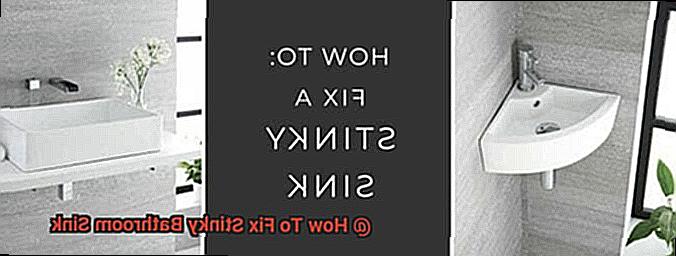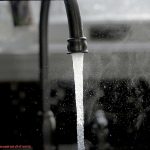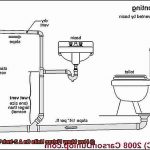Do you dread walking into your bathroom because of the pungent smell emanating from your sink? You’re not alone. A stinky bathroom sink can be a frustrating and unpleasant problem to deal with, but luckily, it’s an easy fix. No need to call in a plumber or spend a lot of money on fancy products.
In this blog post, we’ll explore the most common causes of a smelly bathroom sink and provide you with practical tips on how to eliminate the odor for good. From simple household items to natural remedies, we’ve got you covered.
So, if you’re ready to say goodbye to that pesky smell and enjoy a more pleasant bathroom experience, keep reading. We’ll guide you through step-by-step instructions on how to clean the drain and offer some effective home remedies that won’t harm the environment or your wallet.
Don’t let a stinky bathroom sink ruin your day. With our expert advice, you’ll have your sink smelling fresh and clean in no time.
Contents
- 1 How To Fix Stinky Bathroom Sink
- 2 Conclusion
How To Fix Stinky Bathroom Sink
Step 1: Identifying the Source of the Odor
The first step towards eliminating this unpleasant odor is to identify the source. The culprit could be anything from bacteria buildup to old and deteriorating pipes, but don’t worry, we’ve got you covered.
One way to get started is by sniffing around the sink area and locating where the smell is strongest. If it’s coming from the drain itself, then a clog is likely the issue. A clog can occur due to hair, soap scum, or other debris getting trapped in the pipes.
Another way to identify the source of the odor is by running water down the drain and observing how fast it drains. If it’s slow or not draining at all, then there’s likely a clog that needs to be cleared out. This can be accomplished using a plunger, drain snake, or even a mixture of baking soda and vinegar.
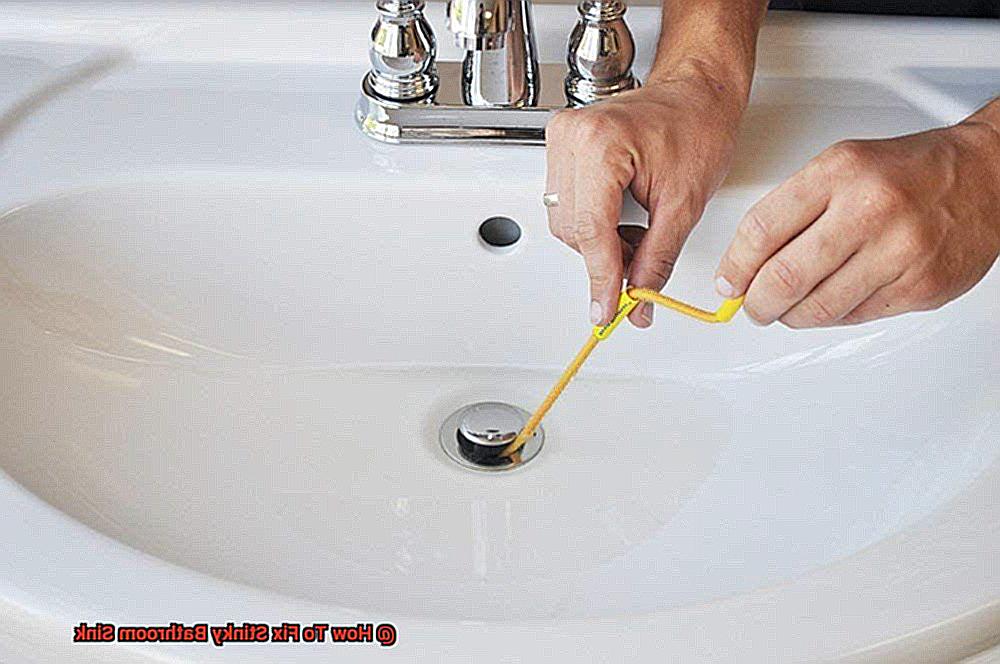
But what if you find that the smell isn’t coming from the drain? Check out the overflow hole located near the top of the sink basin. This hole allows air into the drain pipes and prevents overflow if too much water is added to the sink. However, if it becomes clogged with debris or bacteria buildup, it can cause a foul odor.
In this case, cleaning out the overflow hole with a pipe cleaner or small brush can help eliminate the odor. Keep in mind that if none of these methods work, it may be necessary to call in a professional plumber to inspect and fix any underlying issues with your plumbing system.
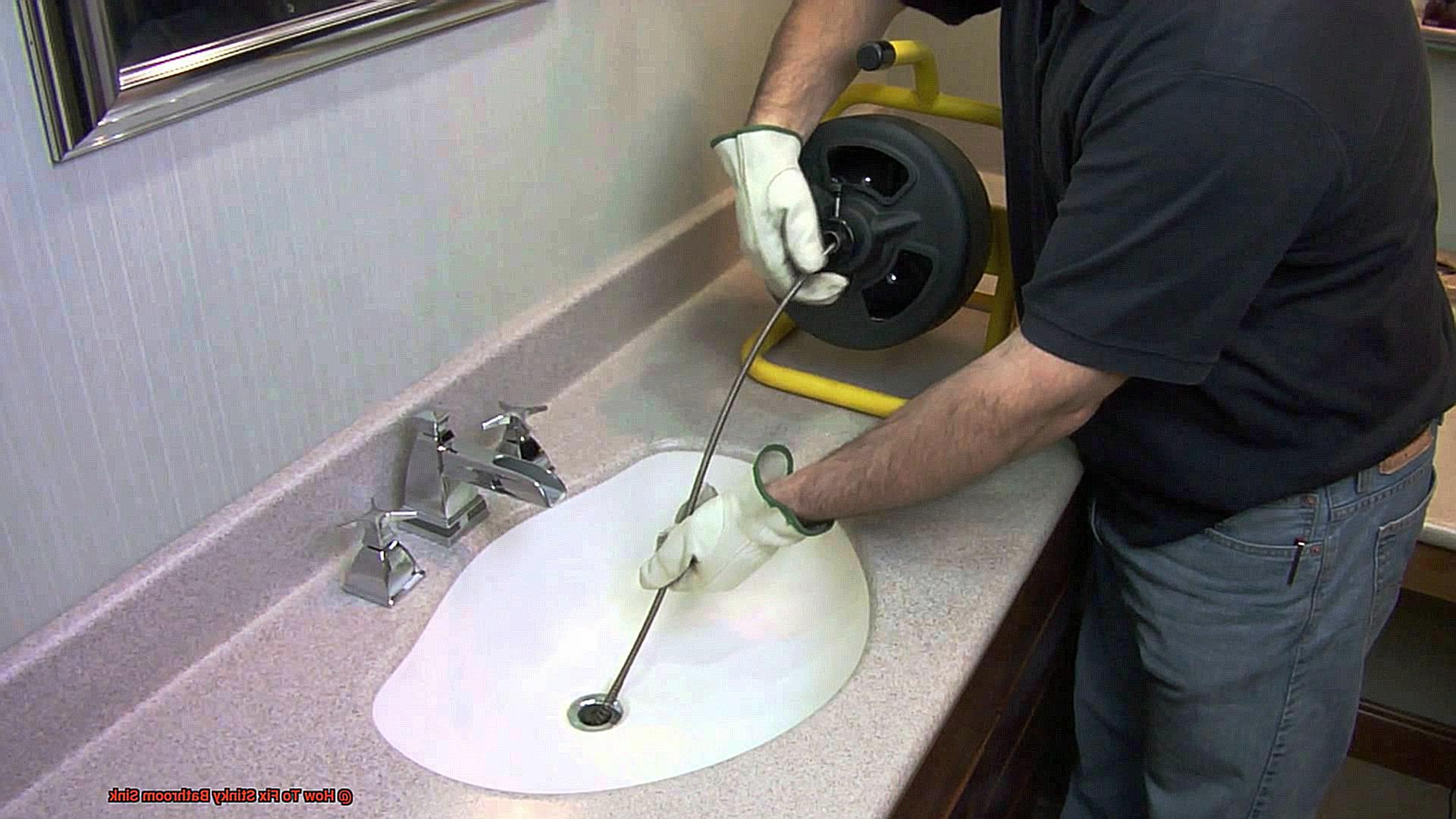
Identifying the source of a stinky bathroom sink is crucial in solving this issue. By using your nose and observing how water drains down the sink, you can determine whether it’s a clog or an overflow hole that is causing the odor.
With a few basic tools and household items, you can quickly eliminate unpleasant smells and ensure that your plumbing system is functioning properly.
Step 2: Removing Visible Debris
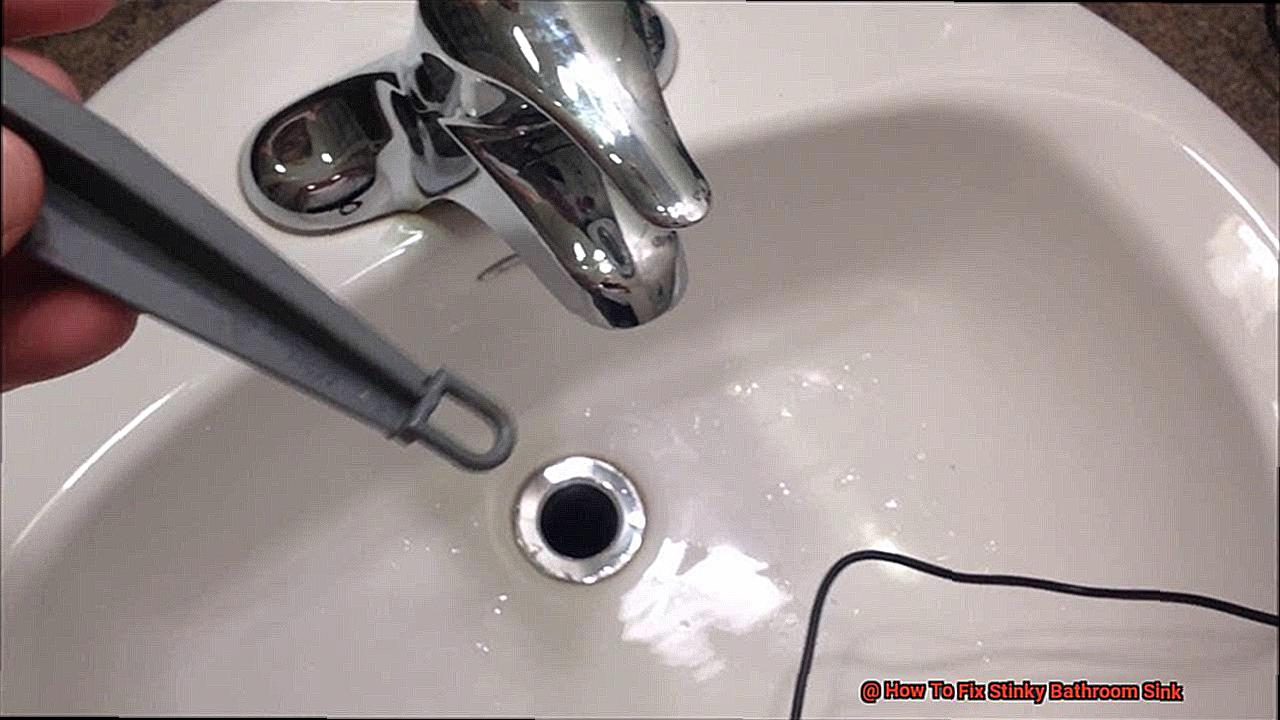
Removing visible debris is an essential step in getting rid of that unpleasant smell coming from your sink. Over time, hair, soap scum, and other foreign objects can accumulate in the drain and cause blockages. To solve this issue, you have a couple of effective methods for removing visible debris.
Method 1: Manual Extraction
The first way to remove visible debris is to use a pair of pliers or tweezers to manually pull out any buildup from the drain. However, before attempting this method, it is crucial to turn off the water supply to the sink to avoid any potential mess. This method is great for removing small objects and hair from the drain.
Method 2: Drain Snake or Auger
The second effective method is to use a drain snake or auger. This tool is designed to navigate through the drain pipe and dislodge any buildup that may be present. It’s important to follow the instructions carefully when using a drain snake, as improper use can cause damage to the pipes or worsen the issue with the sink. This method is best for larger blockages and deep cleaning.
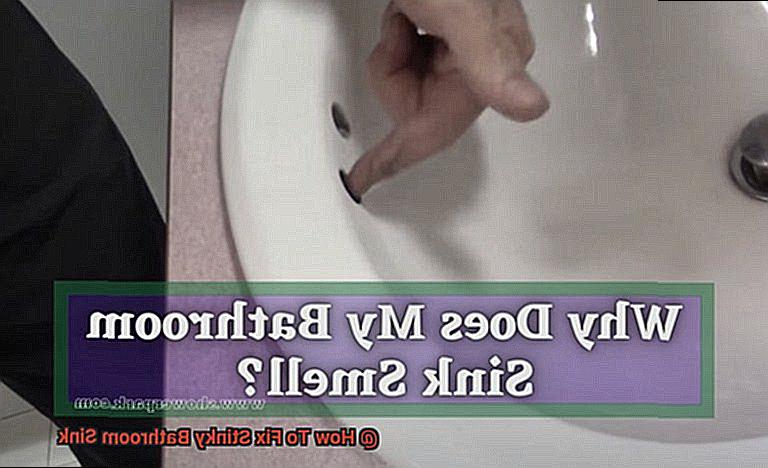
Once you have removed all visible debris, it’s time to clean your sink and drain thoroughly. Use a mild cleaner or natural solution like vinegar and baking soda to eliminate any remaining odors and prevent future buildup from occurring.
By taking the time to remove visible debris and properly maintain your sink, you can ensure proper drainage and eliminate any unpleasant odors for good.
Step 3: Using Boiling Water to Loosen Buildup
Step three of fixing a stinky bathroom sink involves using boiling water to loosen buildup, and it’s a game-changer.
This method is a simple and effective way to remove soap scum and other debris that accumulate in the sink drain. The first step is to remove any visible debris from the sink drain using pliers, tweezers, or a drain snake. Once you’ve done that, it’s time to bring out the big guns – a pot of boiling water.
Carefully pour the boiling water down the sink drain, taking safety precautions, such as wearing protective gloves or using a heat-resistant container. It’s important to ensure that the water goes down slowly and evenly. The heat from the water will break down any buildup in the pipes and push it through the drain.
You may need to repeat this process several times until the odor dissipates completely. However, don’t be disheartened if this method doesn’t work for all types of buildup in your sink. If the stench persists, there are other techniques you can try or seek professional help.
Using boiling water to loosen buildup is an easy and effective way to get rid of that nasty smell coming from your bathroom sink. So why not give it a try today and enjoy a fresh, clean-smelling bathroom sink?
Step 4: Using Baking Soda and Vinegar to Break Down Debris
Look no further than step 4 in fixing a stinky bathroom sink: using baking soda and vinegar to break down debris. This DIY solution is not only affordable, but also environmentally friendly.
The combination of baking soda and vinegar creates a powerful cleaning solution that can effectively remove odors and improve the flow of water down the drain. Baking soda’s abrasiveness can scrub away at grime and buildup, while vinegar’s acidity can dissolve away any clogs or debris. The result? A fresh-smelling bathroom in no time.
To use this method, simply pour one cup of baking soda down the drain followed by one cup of vinegar. The mixture will fizz and bubble as it starts to break down any buildup that may be clogging the sink drain. Allow the mixture to sit for about 10 minutes before flushing it down with hot water.
While this method is effective for minor odors and buildup, it may not work for all types of clogs or buildup in the sink drain. If the odor persists after attempting this solution, it may be necessary to call a professional plumber for further solutions.
Step 5: Removing the Drain Trap and Cleaning It Manually
If you’re still struggling with those pesky bathroom sink odors, don’t worry – we’ve got you covered with step 5: removing the drain trap and giving it a good old-fashioned scrub down.
The drain trap is a vital part of your plumbing system, designed to keep those nasty sewer gases out of your bathroom. However, as time goes by, debris like hair and soap scum can accumulate in the trap, leading to unpleasant smells. So, let’s get to work and clean that sucker out.
To get started, grab some pliers, a bucket or bowl, and a rag or cloth for any spills. Locate the nut that connects the drain trap to the rest of your plumbing system and use your trusty pliers to loosen it. Make sure to place your bucket or bowl underneath the trap to catch any water that may spill out.
Once you’ve removed the trap, it’s time to get your hands dirty with some soap and warm water. Use a brush or cloth to scrub away any debris lurking inside the trap. And if you’re dealing with particularly stubborn clogs, try using a mixture of baking soda and vinegar to break them down.
Now that your drain trap is squeaky clean, it’s time to reattach it securely to prevent any future leaks. Turn on the water and check for any signs of leakage before using your sink again.
By following these simple steps, you’ll be able to kick those unpleasant bathroom sink odors to the curb and enjoy proper drainage for years to come.
Just remember – if you’re feeling unsure about any of these steps or run into any issues along the way, don’t hesitate to call in a professional plumber for help.
zvKxZErwu2c” >
Conclusion
To sum up, a stinky bathroom sink can be a major inconvenience, but don’t worry – it’s an easy fix. By following the steps outlined in this article, you’ll be able to pinpoint the source of the odor and eliminate it once and for all.
From using simple tools like pliers and drain snakes to natural remedies like baking soda and vinegar, there are plenty of effective ways to get rid of visible debris and break down buildup in your sink drain. And if those methods don’t work, you can always take out the drain trap and give it a thorough cleaning.
By maintaining your plumbing system and keeping your sink clean, you can prevent future odors from developing and enjoy a fresh-smelling bathroom every day.

